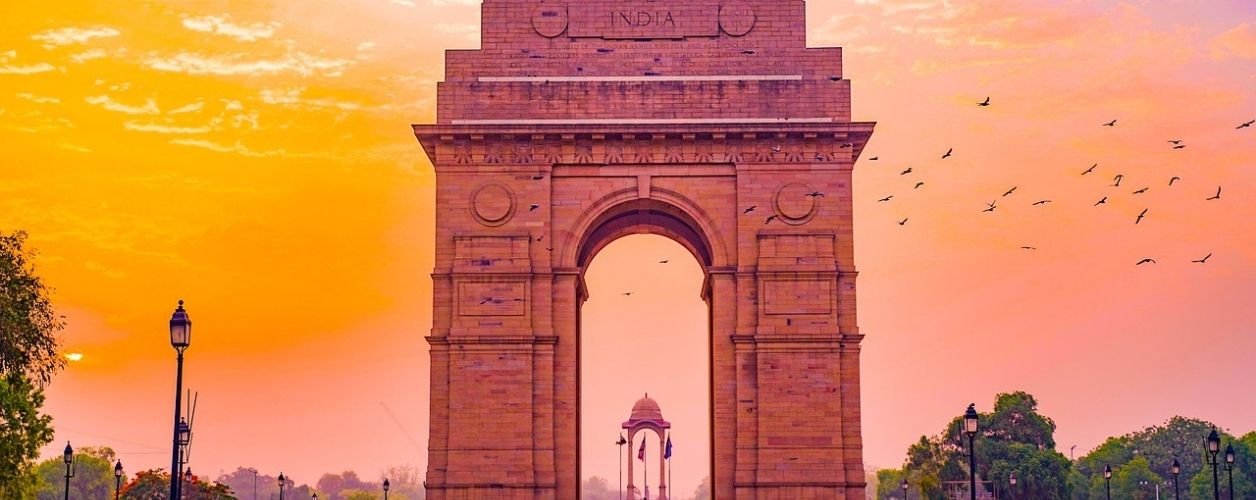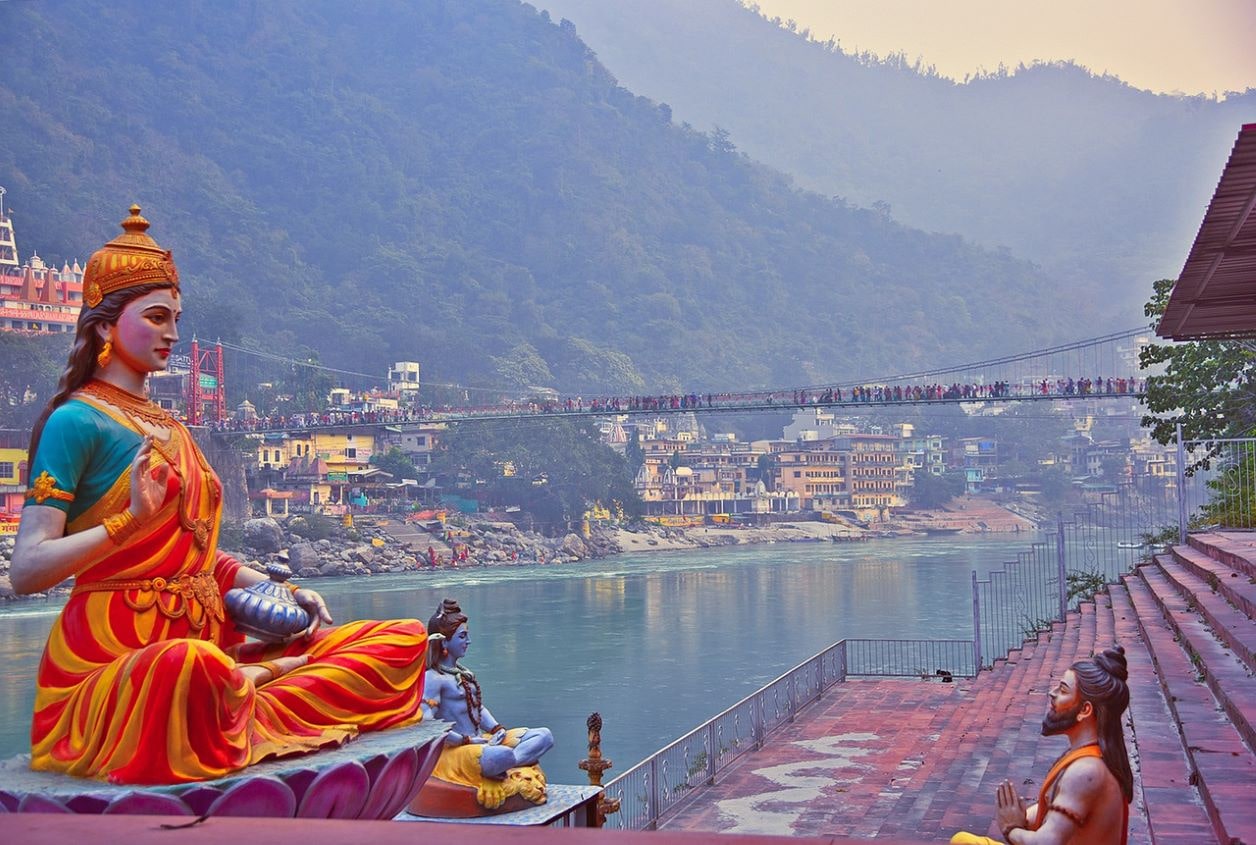
India: The Most Complex Social Mosaic in the World
India is a giant of 1.3 billion people, the most populous country in the world after China, but now a candidate to overtake it in the coming decades. In fact, if in China the birth rate has now dropped to 1.6 children per woman, therefore below the conservation threshold, in India it is still 2.5 and does not seem destined to change abruptly in the near future. However, India already has a primacy in terms of human geography: that of the country with the greatest cultural variety among the population.
It is impossible to speak of Indian society as a single body, and the same national identity has a different importance for each inhabitant. Everyone, in the perception of himself, feels defined by his language, his family heritage and his religion as well as by being an Indian citizen, and the latter often takes second place compared to other cultural traits.
The groups thus formed have multifaceted, but not rigid identities, which allowed cultures and individuals to interact and change in the pursuit of their own goals. The Indian social mosaic is often defined as “complex but not chaotic”, a bold assumption and with many exceptions in the country’s troubled history, but acceptable if you think about how heterogeneous the subcontinent’s society is and the fate of other South Asian countries.
Explaining this diversity of the population is not easy, being the fruit of over three thousand years of alternation of large and small empires, kingdoms, sultanates and colonial states. In the subcontinent hundreds of different populations and tribes have inhabited more or less permanently, assimilating and mixing with the resident population to generate a melting-pot similar to that of the United States.
However, we can observe the situation, dividing the analysis by the individual fractures that cross the population, the dividing lines between social groups on which diversity and, at times, conflict is grafted.
Ethnicity
By “ethnicity” we mean a group of individuals who share characteristics such as culture (horizon of values), history, language, territory or religion, and for this reason claim a common identity as opposed to that of other ethnic groups.
By grouping the ethnic groups according to their affinities we can outline 4 major groups within the Indian population:
- Indo-Aryan: descendants of the population that arrived in India from 1800 BC from the highlands of Persia and since then the majority group in the central and northern area of the country.
- Dravidian: largest ethnic grouping of southern India and many archipelagos of south-east Asia, present in the south of the peninsula for millennia and base of the empires that resisted until the English colonization.
- Tibeto-Burmese: present in the border mountainous areas and often a minority.
- Austro-Asiatic: very minority and divided into small communities. It has lived in some areas close to the Bay of Bengal since ancient times.
In addition to these four main ethnic groups, the presence of at least 400 tribal groups of various origins, widespread above all in the north of the country, which together represent 8% of the population of the subcontinent, should be noted.
This subdivision is by no means sufficient to describe the very complicated mosaic of Indian society. These major groups are actually the federation’s “containers” of human diversity, having divided themselves internally into hundreds of sub-ethnic groups that have distinguished themselves over the centuries of cultural evolution. To date, these definitions designate the major linguistic strains, to be understood as “families” of related languages, but within them these groups are very fragmented and variegated, with heterogeneous religious, political and family identities.
Language
In India, 22 recognized languages are spoken, but according to census data, the most widespread are two. Hindi is spoken as a first language by 39.85% of the population, but if we add to this figure the Urdu language, which uses different characters, but the same grammar as Hindi and therefore is understandable to those who speak it, the percentage of Indians with their first language in common is close to 45%.
If we add to this already great variety the dialects, defined as geographically concentrated languages and spoken by less than a million people, the total number of languages of the federation reaches 1590.
Furthermore, this multiplicity is expressed through dozens of different alphabets, each with its own particular characters. The latest census of the federation found 66 of these alphabets, ranging from the very ancient Sanskrit and Bengali, to the more recent Arabic, Persian and Latin alphabets brought with them by the many populations migrated to the subcontinent and by missionaries.
English has proved to be an excellent social glue from a linguistic point of view, but only for the middle classes. Since the days of British colonization, the English language has been the language of government and consequently the added value with which to compete for the best jobs. For many, the opportunity for integration offered by English takes the form of yet another emphasis on the difference between privileged and non-privileged, effectively excluding the latter from the possibility of improving their status.

Religion
The majority of the Indian population is Hindu (79%) while the Muslim one represents the second group of the country (14%) since the secession of Pakistan and Bangladesh (where Islam is very much in the majority). Christians (2.3%) and Sikhs (1.7%) represent very active minorities and besides the traditional religions in the subcontinent the personality cults of Gurus, prophets and holy men are widespread.
The Hindu religion has been very important in creating links in the mosaic of localisms of the subcontinent. By its polytheistic nature, with thousands if not millions of more or less important deities, it has managed to incorporate local cults and customs into its great tradition, providing millions of Indians with common ground to share with their compatriots and a useful basis. to the nation-building process.
In the history of independent India, however, there have been religious tensions, first of all that with Pakistan at the time of unification, which then led to the separation of the two countries. Today the most turbulent areas from this point of view are Kashmir and the territories of the north-east, isolated and far from the influence of the central state, where, because of this, the demands of political groups also easily leverage on religious identity.
Caste
That of caste is one of the oldest forms of hierarchical social stratification, at least 3000 years old. Hindu society has traditionally been divided into Brahmin (priests and scholars), Kshatriya (warriors and rulers), Vaishya (merchants) and Shudra (workers), to which are added the Dalits, without caste and at the bottom of the social ladder. These groups are in turn divided into over 3,000 minor castes and 25,000 sub-castes.
In the daily life of many Hindus the caste they belong to still defines interpersonal relationships, especially in rural areas where this ancient social segregation is still strong. Here complex social rules govern marriages, work and the simple daily interaction between members of various social groups.
The Indian state does not recognize the caste division and actively pursues any discrimination based on it, and this is a fundamental point of the democratic constitution. Furthermore, since the 1950s, governments have been engaged in programs to promote the social mobility of the most discriminated castes. Although legally abolished, however, this system still weighs on the lives of many Indians.
Multicultural India
One of the key points in the process of building an independent India after the decolonization of the 1940s was the inclusive and accommodating attitude towards diversity. In the rest of South Asia this did not happen and religious, linguistic, ethnic and cultural differences soon became a cause of social fracture, if not real armed conflict.
In the area there were formally Muslims (Pakistan, Bangladesh, Maldives and Afghanistan), Hindus (Nepal), Buddhists (Bhutan) or an official ethno-religious majority, as in Sri-Lanka with the Sinhalese group of Theravada Buddhist religion.
In all these countries, the social conflict was incredibly bitter than in India, despite the heterogeneity of the population present in a similar way and moreover on a smaller scale. This is not only due to the farsighted policy in favor of multiculturalism, but also to some specific characteristics of the context of the subcontinent.
For some scholars, the absence of a dominant mechanism in it has contributed to dampening the disintegrating charge of this diversity of Indian society: the whole is so interconnected that the fractures struggle to radicalize, allowing the system not to divide clearly on a single aspect (as in Pakistan for religion or in Sri Lanka for ethnicity) in a dangerous way.
The territorial dimension also contributed to defusing conflicts at least partially: groups rarely identify themselves with well-defined territories, being instead scattered over large areas shared with other populations. Where this fails, the tension grows.
Factors completely unrelated to it play a critical role in the extremization of ethnic identity and therefore in the politicization of diversity. Radical ideologies, the influence of elites or external actors, secessionism and economic reasons are the factors capable of making diversity conflictual, not the “clash of civilizations” per se.